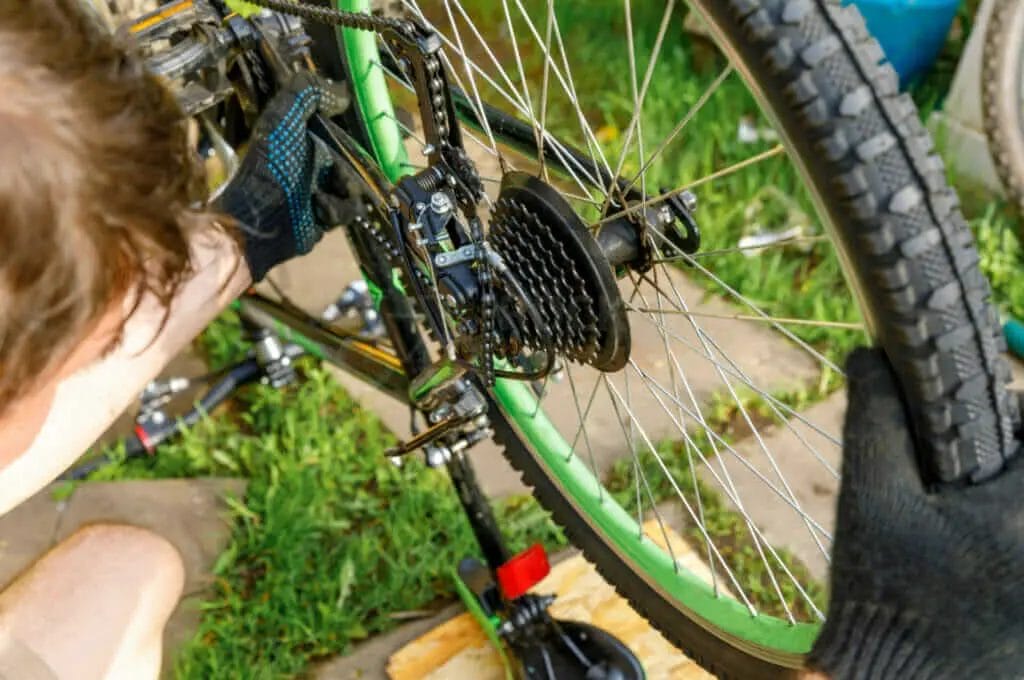Last Updated on July 28, 2024 by Vinson Lozano

Riding through mud and grime can be exhilarating, but it leaves your bike in desperate need of a thorough cleaning. Neglecting bike maintenance after muddy conditions can lead to premature wear and tear, affecting performance and safety. In this guide, we’ll walk you through the essential steps to effectively clean your bike post-muddy ride, ensuring it remains in top condition.
Key Takeaways:
- Preparation is Key: Gather all necessary cleaning supplies before starting.
- Focus on the Drivetrain: The drivetrain should be your primary focus as it’s most susceptible to mud and debris.
- Use Gentle Cleaning Methods: Avoid high-pressure hoses that can damage sensitive parts.
- Dry Thoroughly: Ensure all parts are dry to prevent rust and corrosion.
- Regular Maintenance: Incorporate cleaning into your regular bike maintenance routine to enhance longevity.
- Lubrication is Crucial: Properly lubricate the chain and moving parts after cleaning to ensure smooth operation.
- Inspect for Damage: Always check for any potential damage caused during your ride or the cleaning process.
Detailed Cleaning Steps
1. Gather Your Cleaning Supplies
Before you start, make sure you have all the necessary supplies. You’ll need:
- Clean rags and brushes of various sizes
- Biodegradable soap
- Bucket of water (warm water can be more effective)
- Bike-specific degreaser
- Chain lubricant
- Bike stand (optional but helpful)
2. Rinse Off Loose Mud
Begin by gently rinsing your bike to remove any loose mud and debris. It’s important to use a low-pressure water flow to avoid forcing water into bearings and other sensitive areas.
3. Clean the Drivetrain
The drivetrain is often the dirtiest part of the bike after a muddy ride. Use a degreaser on the chain, chainrings, cassette, and derailleurs. A chain cleaning device can make this task easier and more thorough. After degreasing, rinse the drivetrain with water and dry it completely.
4. Wash the Frame and Wheels
Using a sponge or soft brush, clean the frame, fork, and wheels with soapy water. Pay special attention to areas where mud tends to accumulate, like the underside of the frame and behind the seat tube. Rinse these parts gently with water and dry with a clean rag.
5. Lubricate the Chain and Moving Parts
Once the bike is clean and dry, apply lubricant to the chain, focusing on each link to ensure smooth operation. Also, lubricate other moving parts such as derailleur pivots and cable housings. Wipe away excess lubricant to prevent attracting dirt.
6. Reassemble and Check Your Bike
If you removed any parts for cleaning, reassemble them. Check that all components are secure and properly adjusted. Perform a quick safety check by ensuring that the brakes and gears are working correctly.
Conclusion
Cleaning your bike after a muddy ride is crucial for maintaining its condition and performance. By following these steps, you can ensure that your bike is always ready for your next adventure. Regular maintenance not only extends the life of your bike but also enhances your riding experience.
FAQ
How often should I clean my bike if I frequently ride in muddy conditions?
- Clean your bike after every muddy ride to prevent buildup and corrosion.
Can I use household cleaners for my bike?
- It’s best to use biodegradable soap or bike-specific cleaners to avoid damaging the bike’s components.
How do I prevent rust after washing my bike?
- Thoroughly dry your bike after washing and apply a lubricant to metal parts.
What should I do if my brakes start squeaking after a wash?
- Check if the brake pads are clean and dry. Squeaking often occurs if there’s residue or moisture.
Is it necessary to lubricate the chain after every wash?
- Yes, lubricating the chain after each wash is crucial to protect it from rust and ensure smooth operation.
How can I dry my bike quickly after washing?
- Use clean, dry rags to wipe down all surfaces. A compressed air canister can be used to blow water out of crevices.
What type of lubricant should I use for my bike chain?
- Use a lubricant appropriate for the riding conditions. Wet lube for wet conditions and dry lube for dry conditions.
Can pressure washing damage my bike?
- Yes, high-pressure water can force dirt into bearings and wash away lubricants. Use low-pressure water instead.
How do I clean disc brakes without damaging them?
- Use isopropyl alcohol and a clean rag to wipe the rotors. Avoid getting oil or soap on them.
What’s the best way to clean a bike helmet?
- Use mild soap and warm water, avoiding harsh chemicals that can degrade the materials.
Feel free to share your bike cleaning tips or ask more questions in the comments below! Happy riding and cleaning!

